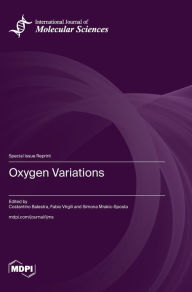Oxygen Variations Costantino Balestra Editor
Oxygen Variations Costantino Balestra Editor
Despite the extensive number of years that medical science has employed oxygen, we have not totally mastered its use. Hypoxia (normobaric or hypobaric), normobaric hyperoxia and hyperbaric hyperoxia refer to the various levels of oxygen that humans a...
Read more
Despite the extensive number of years that medical science has employed oxygen, we have not totally mastered its use. Hypoxia (normobaric or hypobaric), normobaric hyperoxia and hyperbaric hyperoxia refer to the various levels of oxygen that humans are submitted to, either in the medical field or during sports activities such as scuba diving or mountaineering. In chronic situations such as living at high altitudes, we submit our bodies to prolonged hypoxia. One such example of a human settlement at extreme altitudes is the town of La Rinconada in Peru (around 4500-5500 m, approximately 11% of inspired oxygen). In physiological situations, hypoxemia is frequently observed in the absence of hypoxia in athletes who experience very high maximum oxygen consumption during maximal exercise (Dempsey effect); in this case, we find an extremely high pulmonary blood flow associated with a reduced capillary transit time, which does not allow the blood to complete sufficient oxygen loading. Prolonged hyperoxia is more difficult to achieve than prolonged hypoxia, but is possible, for instance, if people live below sea level, such as near to The Dead Sea in Israel. This Special Issue aims to provide an overview of the various approaches and physiological mechanisms or reactions to oxygen variations, and will be of great interest to scholars, physicians, researchers, sportsmen, coaches, and biologists, or, indeed, anyone interested on oxygen.
Less





